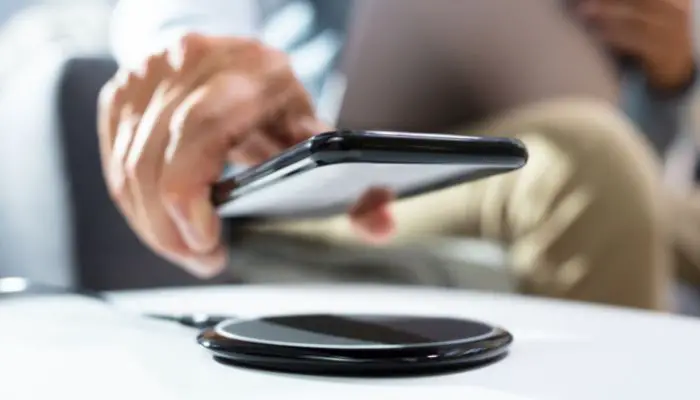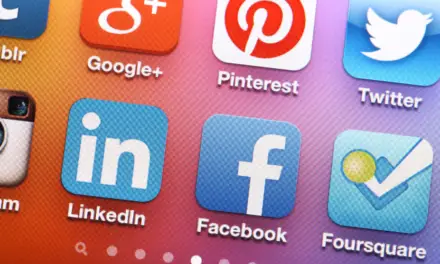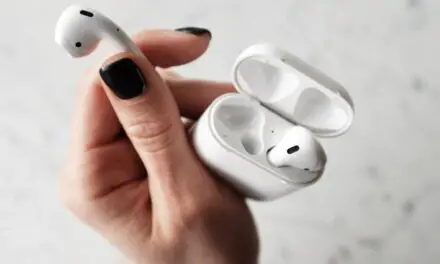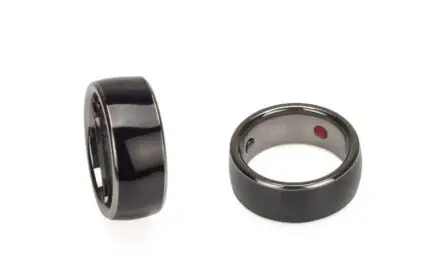In 2017, Apple released a patent on the heels of some strange Apple thing that charges while your iPhone levitates. While levitation charging sounds pretty cool in theory, we’re more interested in the second patent because it concerns wireless data transfer.
The patent placed an equal amount of focus on the iPhone’s ability to charge and wirelessly transfer data.
We know that certain apps allow this and you have to have the latest and greatest phones to do it. However, it’s not a very common thing right now.
So, as things stand, does charging wirelessly involve a transfer of data?
Does Wireless Charging Transfer Data?

During wireless charging, small amounts of serial data are sent which allows the charger to send an appropriate amount of power to the device. The data that typically gets sent is instructions from the device to request more power, less power or terminate power because charging has been completed.
For a more meaningful way of two-way data transfer between a wireless charger and a device, the charger itself would need to have storage and data transfer technology built into it. For two, the device you’re charging has to be actively sending or receiving data.
However, wireless chargers are usually simple devices, containing little more than a tightly wound copper coil, and generally, they don’t support data transfer beyond what was stated above. Your wireless charger would need to have storage and a chip that would allow it to accept and transfer data for the process to work.
That doesn’t mean that wireless charging can’t transfer other types of data because it certainly can. Wireless data transfer already exists with technologies like WiFi, Bluetooth, and AirPlay.
It also looks like Apple is working on making this concept a focus in future years. The patent is a few years old now but it’s pretty common for patents to get scrapped on the drawing-room floor.
There are already methods for wirelessly transferring data, such as Bluetooth, WiFi, Zigbee, and Z-Wave. Every time you send someone a picture from your smartphone, you are wirelessly transferring data.
There is a small amount of data transference. The problem is, this method of data transfer is so slow and inadequate that computers from the early 90s were capable of transmitting more and faster. All you’re getting with a Qi charger is essentially, “charge” and “I am charged.”
There are new, wireless chargers releasing that are capable of more than just charging and transmitting a digital “finished”. For instance, SanDisk released a wireless charger that also stores your smartphone’s data, as its charging.
It takes the place of cloud storage for smartphone backup by becoming the backup source itself. Once your phone is finished charging, all of its important information is now stored on the charging device.
What Happens During Wireless Charging?
Wireless charging is possible through the use of electromagnetic fields. These fields are generated through the use of coils. That’s right, we’re just now producing the functioning and useful technology that Nikola Tesla invented early in the 20th century.
To accept a wireless charge, the smartphone also has to have these coils built in. That’s why you feel a magnetic pull when you place your smartphone on a wireless charger. It’s completing the electromagnetic field and it starts to charge.
If you run an electrical current through something, it will produce a magnetic field. If a wire is then placed close to that magnetic field, it will produce an electrical current within the wire.
By the same process, when a current is run through the copper coils in a wireless charging pad, there’ll be a magnetic field contained closely around the pad.
When your phone is placed on the wireless charging pad, the magnetic field produces an electrical current in the coils in your phone and that charges the battery.
It’s not all it’s cracked up to be. All that is happening here is the smartphone and wireless charger come together to complete the circuit, something we’ve been doing for well over a hundred years with electrical wiring.
Related Article: Can A Computer Be Hacked If It Is Turned Off? (Explained!)
Ancient cavemen and women closed a circuit every time they were struck by lighting. The concept isn’t new. It’s the “how” that’s a little different here. Currently, engineers are trying to create ways to both transfer data and charge in the most expedited manner possible.
SanDisk’s above example was just a first step in that direction. Right now, charging at a distance seriously reduces power efficiency. When the power is reduced that much, so is a potential data transfer.
The future hints at a world where you can charge your phone just by being in your house, along with transferring any data you need through that same system.
All Things Considered
While there is a subtle degree of data transfer when you wirelessly charge your phone, it’s just very basic instructions that your phone sends to the wireless charger to request more, less, or no power.
There are new devices coming out that do a little more with wireless data transfer, but what is that in the face of standard wireless data transfers? The answer remains to be seen.



